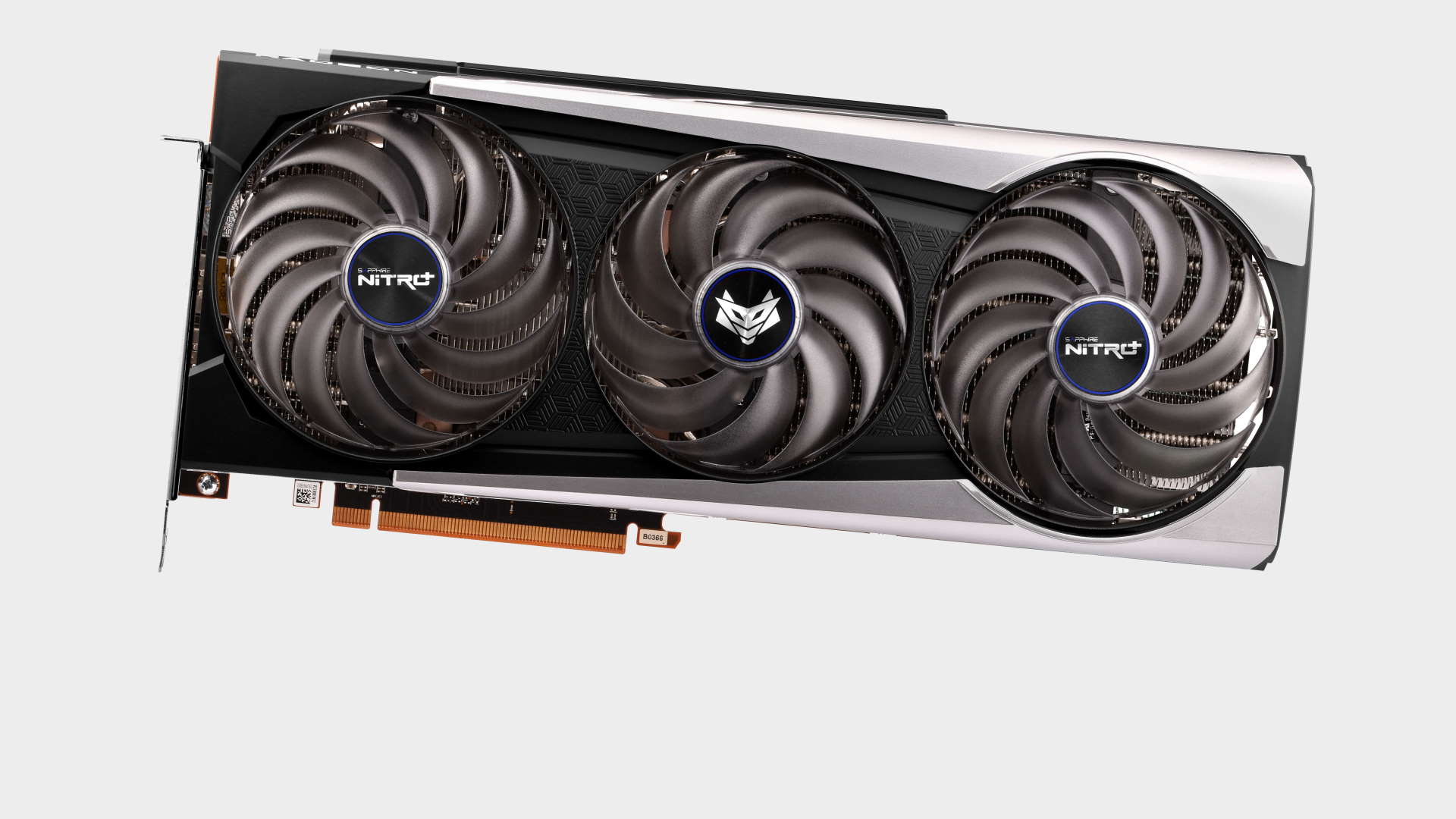Our Verdict
A great all-rounder RX 6800 XT that offers strong performance, low noise running, and temps. But its shine is removed by shocking price gouging.
For
- Strong out-of-the-box performance
- Well designed and effective cooling
- Low noise levels
Against
- Frankly offensive price right now
PC Gamer's got your back
The Sapphire Nitro+ RX 6800 XT is the latest graphics card from one of AMD's biggest partners, even if its boards do sometimes fly under the radar. The company might not have the high profile of the likes of Asus or MSI in some markets, but it does have a well-deserved reputation for producing some excellent cards at highly competitive price points.
The Sapphire RX 5700 XT Pulse was one such card though, in hindsight, those cards were mere teasers as credible rumors of Big Navi began to circulate in mid/late 2019. We’ve covered a few RX 6800-series cards, and now it’s Sapphires’ turn.
The Nitro series sits above the Pulse in the Sapphire range, which puts it against premium tier cards such as the MSI Gaming X or Aorus Master among others.
The global GPU market is—how shall we say it without using a few choice expletives—difficult right now. But aside from value or price, there’s still a lot that separates the good from the merely average. We’ve covered a few RX 6800-series cards, and now it’s Sapphires’ turn. The Nitro series sits above the Pulse in the Sapphire range, which puts it against premium tier cards such as the MSI Gaming X or Aorus Master among others.
GPU - AMD Navi 21
Architecture - AMD RDNA 2
Lithography - TSMC 7nm
Base clock - 1,850MHz
Boost clock - 2,360MHz
Memory - 16GB GDDR6
Memory speed - 16Gbps
Memory bandwidth - 512GB/s
Outputs - 3x DP 1.4a, 1x HDMI 2.1
Power connections - 2x 8-pin
TDP - 350W
The reference AMD RX 6800 XT features a boost clock of 2,250MHz, whereas the Sapphire Nitro+ bumps it up to an impressive 2,360MHz. The memory specification of the reference RX 6800 XT and the Sapphire Nitro+ is identical, with 16GB of 16Gbps memory over a 256bit bus.
The 7nm Navi 21 GPU as found in in the AMD RX 6800, AMD RX 6800 XT and AMD RX 6900 XT brings a big generational leap in traditional raster performance. It even surpasses the mighty Nvidia RTX 3080 in some cases though it remains to be seen how current and future games will take advantage of AMD’s fledgling ray tracing and super resolution capabilities. Time will tell if these implementations contribute to the ‘fine wine’ reputation that AMD sometimes attracts.
We look forward to seeing how AMD performs in a game like Cyberpunk 2077 once all of its technologies are supported in the driver.
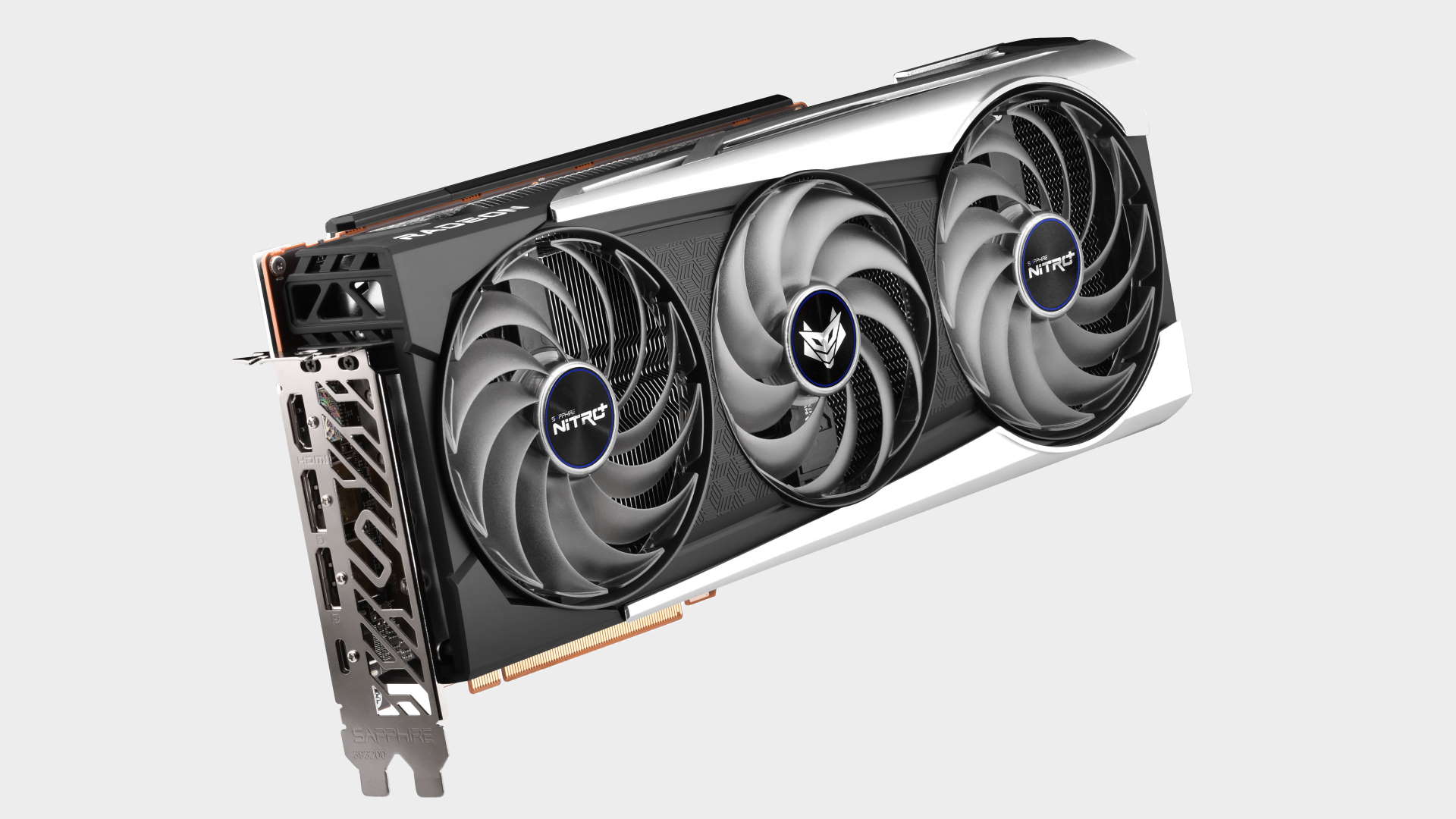
Like most custom RX 6800 XTs, the Sapphire Nitro+ makes use of a large triple slot, triple fan cooler. There’s a large cut out on the rear of the card to allow air to pass through it, not unlike the RTX 30-series Founder Edition coolers. The Nitro+ features standard black fans and three DisplayPort connections, plus a single HDMI 2.1 port. The triple DisplayPort of the Nitro+ could make it a favourite of triple monitor users, especially those with higher resolution screens that have older refresh rate limited HDMI ports. If you want a little more bling, the Nitro+ SE sits above the Nitro+, which adds RGB fans and omits one of the DisplayPort sockets in favour of a USB Type-C port. Both cards are otherwise identical.
The PCB of the Nitro+ packs in a 13-phase VRM powered by dual 8-pin power connectors. Its 350W TDP is quite a bump over the 300W of the reference card. Will it help with power limited OC? The PCB shares a lot in common with the reference PCB, but that’s because the AMD PCB is a good one, not that Sapphire is taking an easy option. There are still many differences. The card includes a dual BIOS feature, which includes an optional lower TDP setting in addition to the default one.
There's a third setting too. It lets you choose between both BIOSes with Sapphire’s Trixx software app. If you’re after a good splash of RGB, you’re in luck thanks to an attractive RGB light bar and logo across the top of the card plus an additional graphic on the backplate. There’s also an ARGB header if you want to synchronize other RGB devices with those of the card.
The design of the cooler is quite aggressive. The outer shroud is plastic, though the backplate is metal. The centre fan has a slightly smaller diameter, likely chosen in order to keep the card to a total length of 31cm. That extra cm or two over the longest RX 6800 XTs could be the difference between it fitting in a case, or not. In addition to the beefy six heat pipe cooler, Sapphire has equipped a rather elaborate secondary heatsink to cool the memory and VRM. It has a large surface area thanks to its finned design. It’s a neat addition and all of this results in the Sapphire being the quietest of the three non-reference RX 6800 XT cards we’ve reviewed so far.

1440p gaming performance
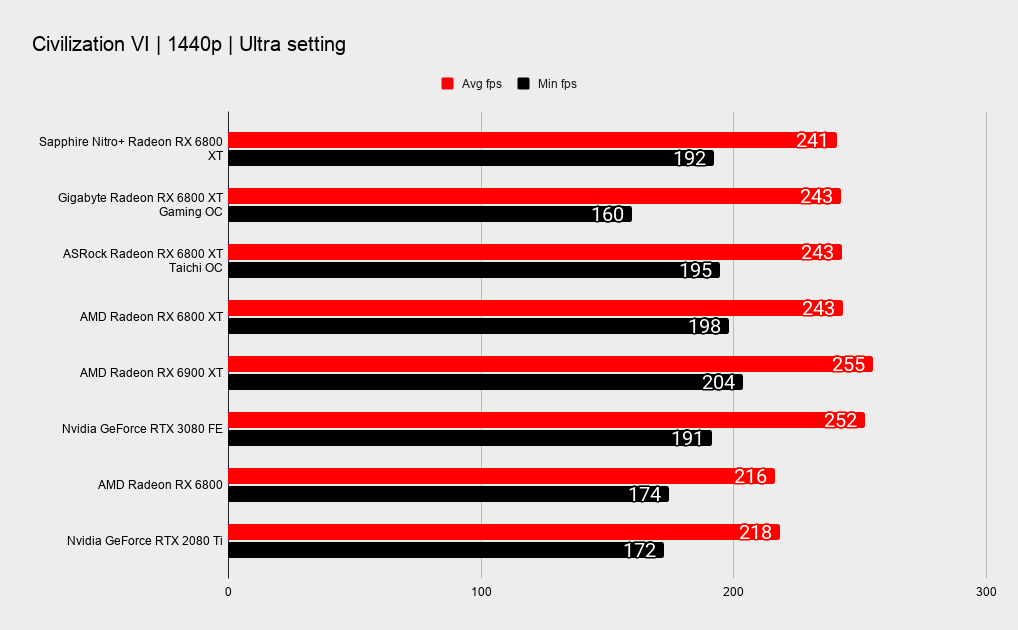
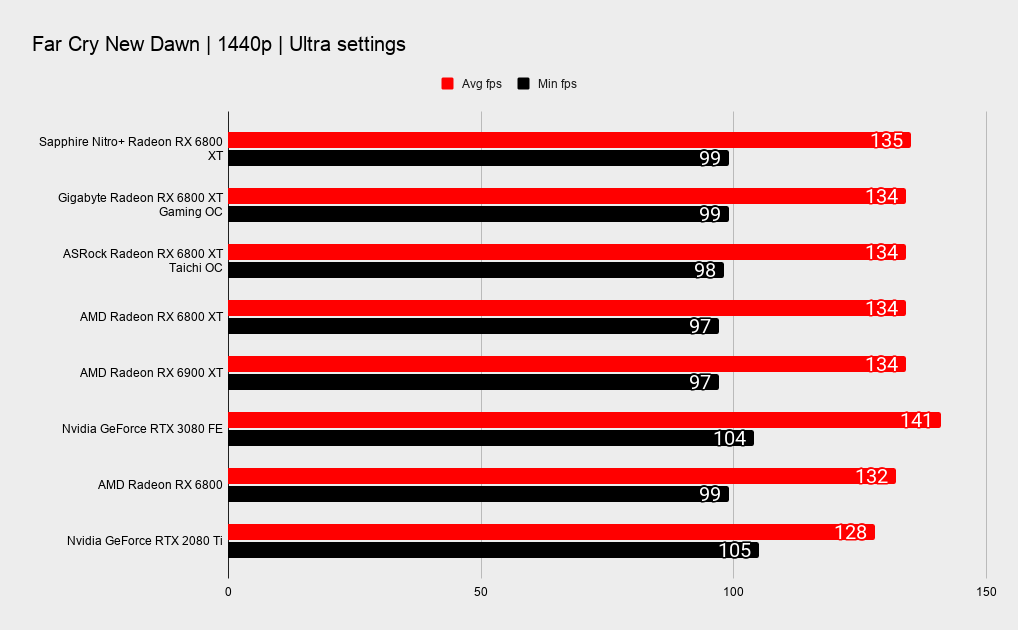
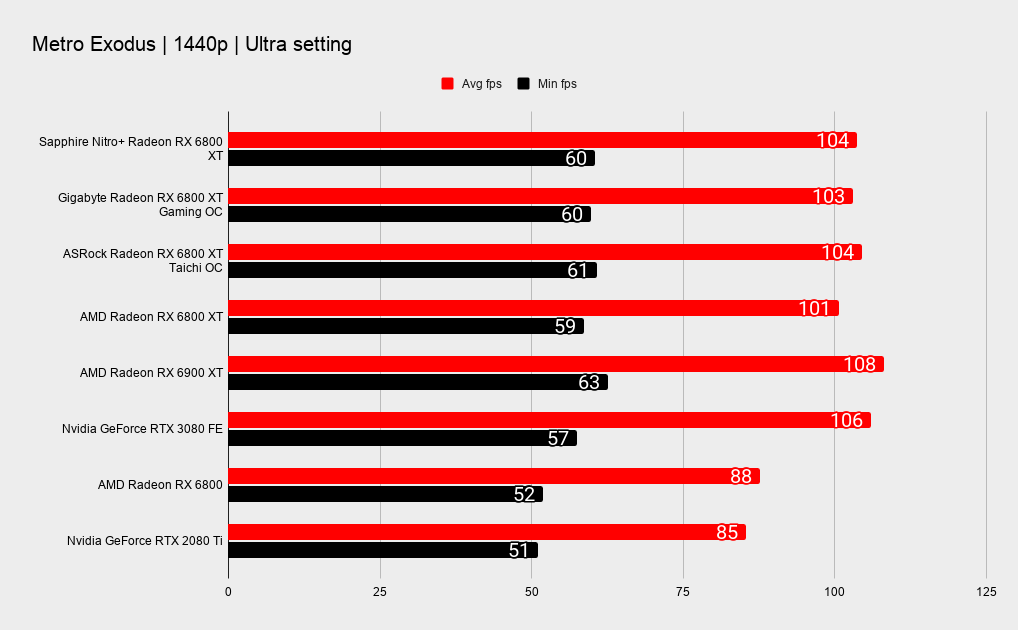
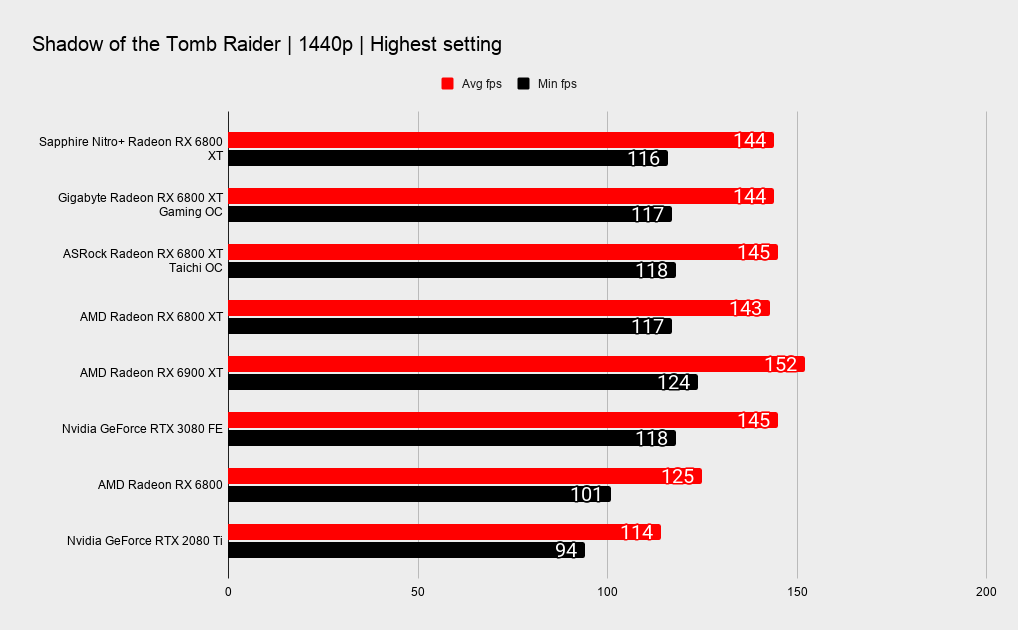
4K gaming performance
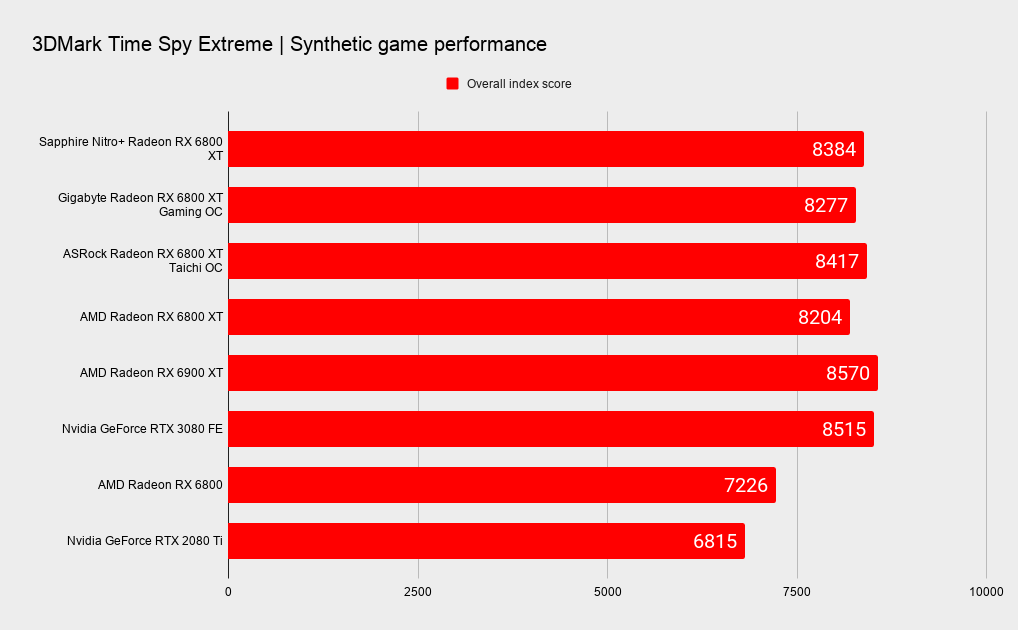

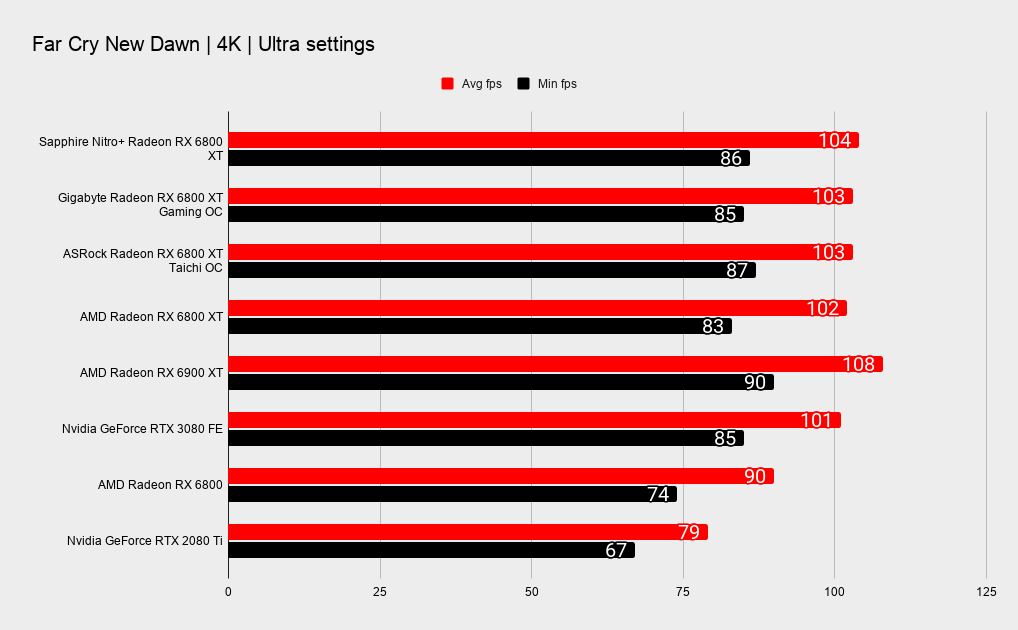
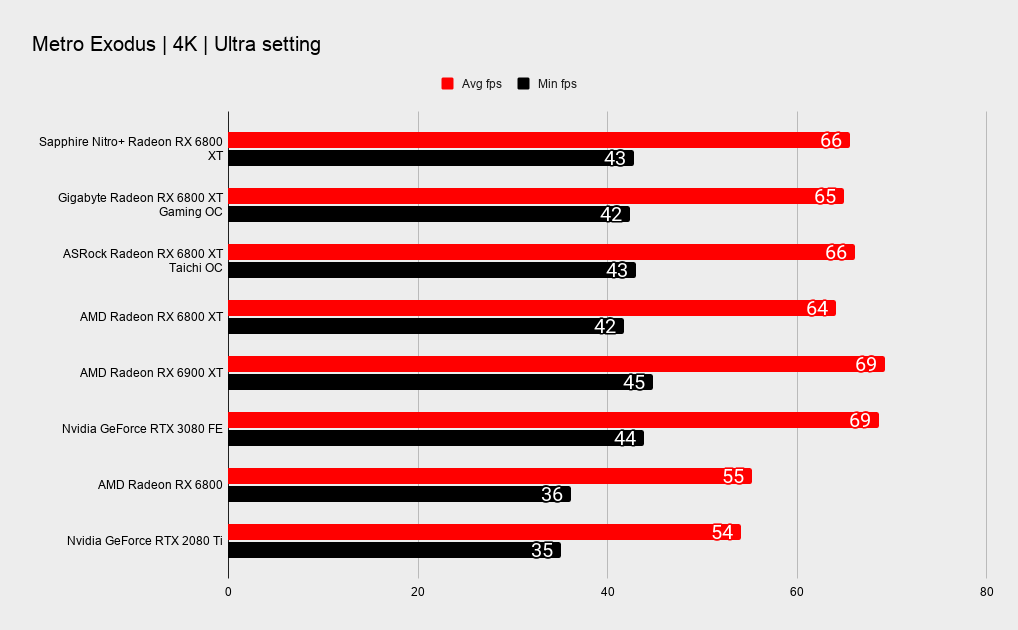
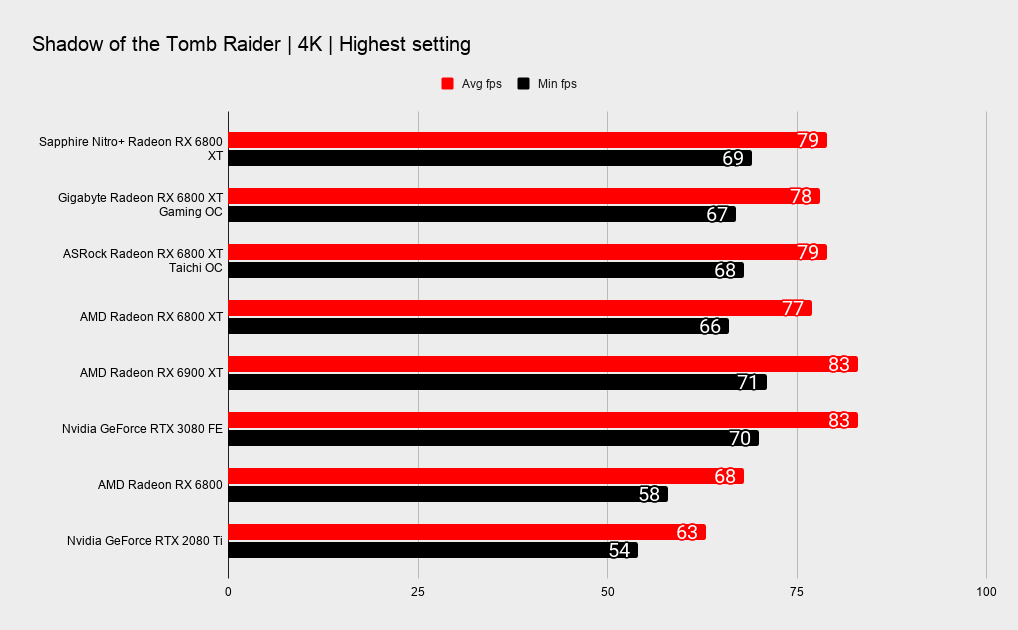
Thermal performance
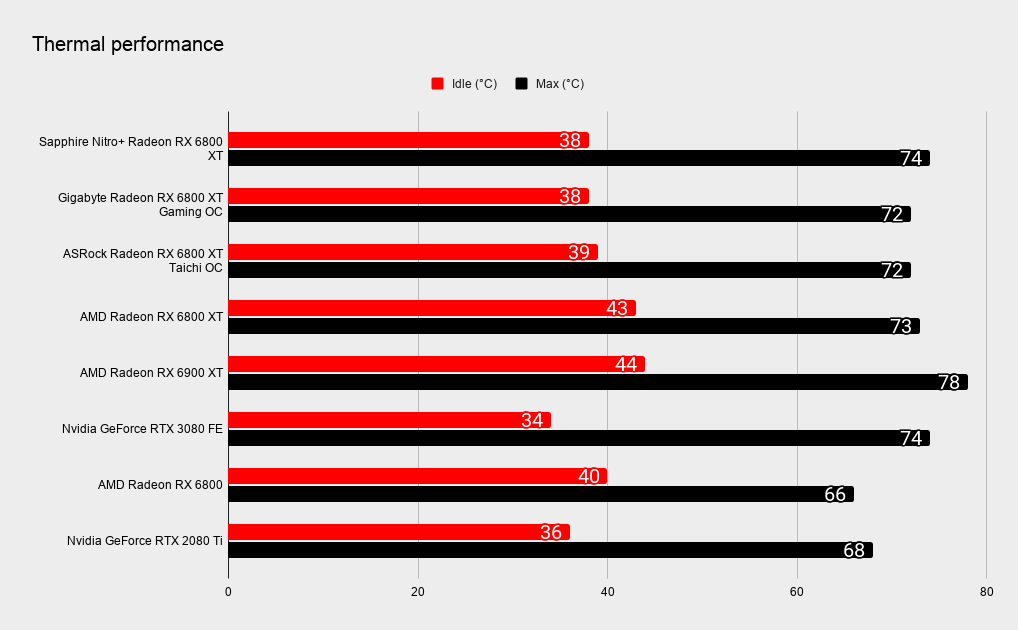
CPU - Intel Core i9-10900K @ 5.1 GHz all cores
Motherboard - Asus Maximus XII Apex
Memory - 16GB Team T-Force Xtreem ARGB 3,600MHz
Power Supply - Corsair AX1000
Storage - 1TB Samsung 860 Pro (OS), 1TB Western Digital SN750 Black (Games)
Cooling - NZXT X73 360mm AIO
Operating system - Windows 10 Pro 1909 64-bit
The performance characteristics of RX 6800 XT cards appears to be at least partially dependent on the quality of the silicon itself. The Sapphire Nitro+ and the ASRock RX 6800 XT Taichi X OC both share the same boost clock, yet the ASRock was able to hold about 20 to 30MHZ higher boost clocks consistently at roughly 2,350MHz vs 2,380MHz. The performance differences aren’t big but, like we've seen with Nvidia’s boost technology, the rated clocks aren’t much more than a rough guide of what to expect.
This particular RX 6800 XT was able to overclock to a very impressive average of just above 2,600MHZ, which is the highest we’ve seen to date. This is likely due to the Nitro’s official 350W TDP, which gives it a good bit of headroom over the 300W reference card. This puts it ahead of the RX 6900 XT and RTX 3080 in Metro Exodus at 4K. Though, as always with overclocking, your mileage may vary.
Now we come to the part we really hate having to talk about. Pricing and availability.
We can talk about performance, specs, features, and all that other goodness—all things at which the Sapphire Nitro+ RX 6800 XT does very well, but none if means anything if you can’t buy one. Newegg USA lists the Sapphire Nitro+ 6800 XT at $1,000. In the UK it's marked down as £830 at Overclockers and that translates to over $1,100. Come on... really?
We criticized the pricing of the Gigabyte RX 6800 XT Gaming OC at $849, but that seems like a veritable bargain in comparison. This market has officially gone crazy. We then have to ask, will we ever see a situation where you can walk in off the street and buy an RX 6800 XT anywhere near close to RRP? The supply of Nvidia cards is hardly any better but at least they’re mostly under a thousand bucks... at least at the time of writing.
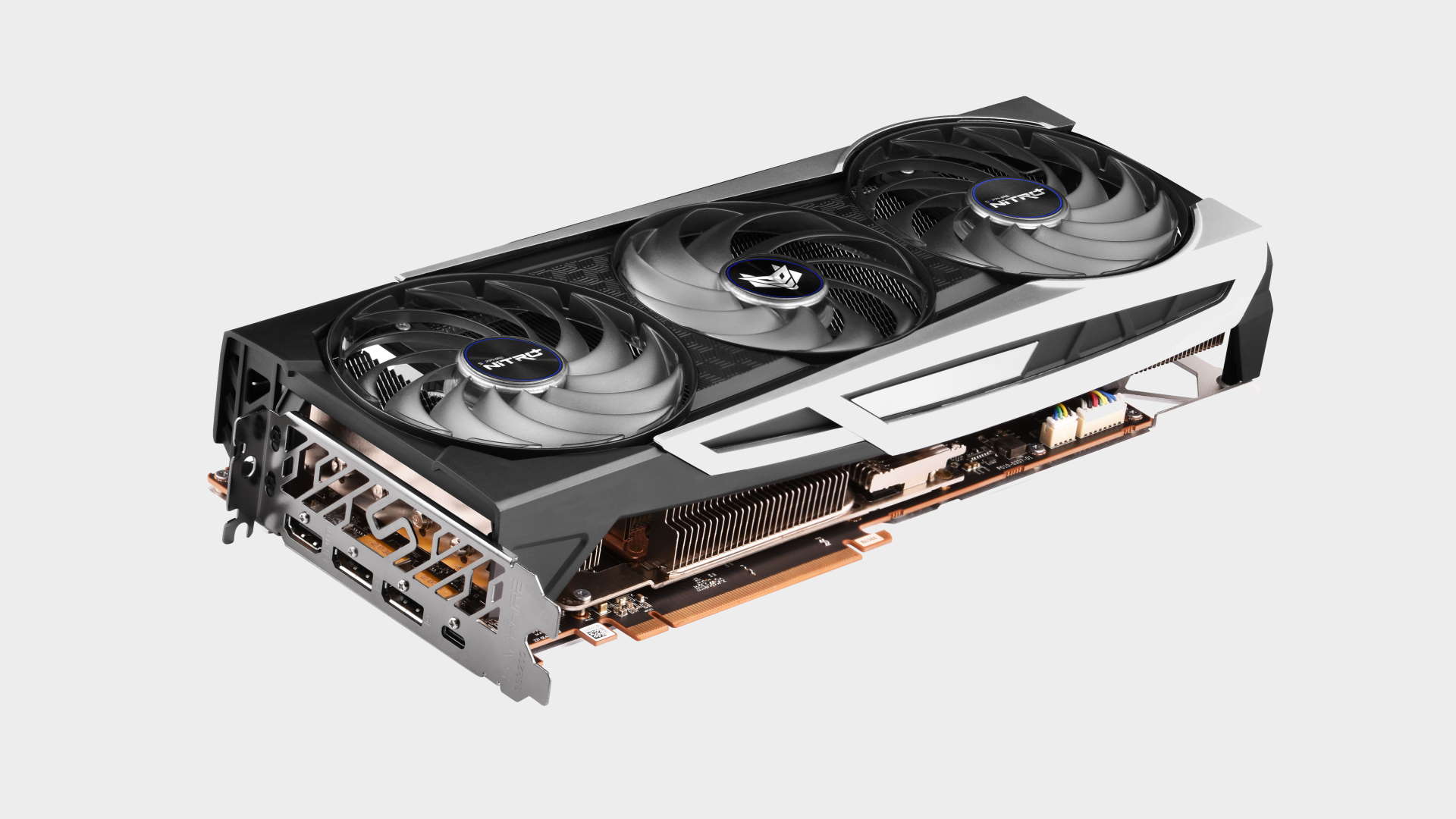
The Sapphire Nitro+ is a very good example of AMD's RX 6800 XT and therefore a great 4K/60Hz card that strikes a very good balance between high clocks, low noise levels, and temperatures. It’s quiet, it has very effective primary and secondary cooling and it offers a nice performance bump over the capable reference card.
It’s supposed to offer reasonable value too with a $770 RRP, and that would make it one of the best RX 6800 XT cards around. But if they really are going for a grand, it’s a non-starter. We don’t blame Newegg or even Sapphire for this. Given demand both are surely desperate for more supply. But for now, it’s just not there and this pricing is not fair. If that changes, then the score does too. You’re better off waiting to see if pricing ever stabilizes. Don’t cave in to eBay rip-off merchants or even the super high-priced actual retailers.
Maybe you can find an RTX 3080 once the bottom falls out of the crypto market once more, but for now, the GPU market is in the equivalent of a padded cell. Let’s hope sanity prevails.
A great all-rounder RX 6800 XT that offers strong performance, low noise running, and temps. But its shine is removed by shocking price gouging.

Chris' gaming experiences go back to the mid-nineties when he conned his parents into buying an 'educational PC' that was conveniently overpowered to play Doom and Tie Fighter. He developed a love of extreme overclocking that destroyed his savings despite the cheaper hardware on offer via his job at a PC store. To afford more LN2 he began moonlighting as a reviewer for VR-Zone before jumping the fence to work for MSI Australia. Since then, he's gone back to journalism, enthusiastically reviewing the latest and greatest components for PC & Tech Authority, PC Powerplay and currently Australian Personal Computer magazine and PC Gamer. Chris still puts far too many hours into Borderlands 3, always striving to become a more efficient killer.
